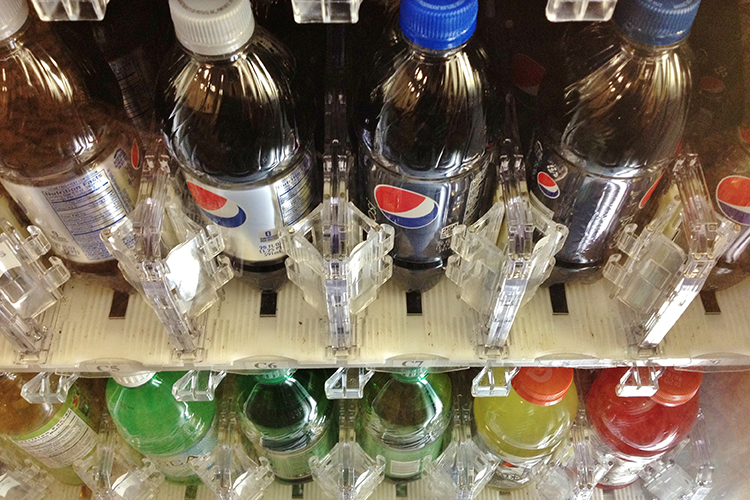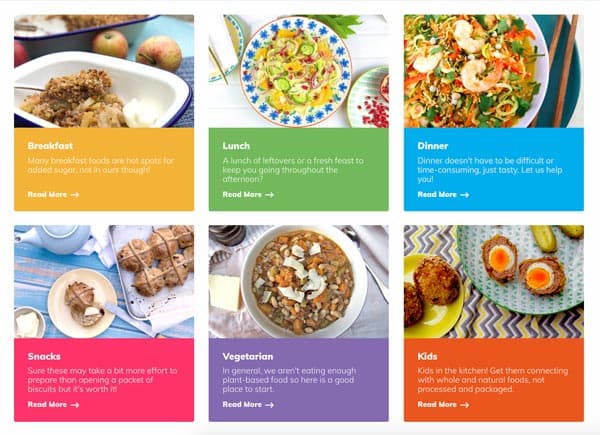Blog
Stopping sales of sugary drinks means we drink less
Whether at the local recreation centre or in the hospital waiting room, sometimes when visiting these places the desire to consume something ensues. However, much of the food in these centres – places that promote health and wellbeing – dish up a whole lot of sugary and heavily processed junk.
A 2016 survey by Deakin University surveyed food and drink purchasing activity by over 2,000 people at four of Melbourne’s largest aquatic centres. The results showed almost all the food and drink people are buying – children especially – are classified as ‘unhealthy’.1
So what to do about it?
“With children’s swimming lessons being offered at these four pools each week, improving the nutritional quality of the food in the cafe has the potential to significantly reduce these kids’ exposure to, and consumption of, unhealthy options,” says lead researcher Tara Boelsen-Robinson, from Deakin’s Global Obesity Centre in the School of Health and Social Development.
Removing from sale sugary foods and junk people will purchase healthier alternatives. And this is being proven in health care and recreational centres across Australia!
Recreation centres sub-in healthier food and drink
Deakin University has been working alongside YMCA Victoria to reduce soft drinks for sale and increase availability of healthier drink options.
70 YMCA outlets removed sugar-laden soft drinks from sale, and while sales of these products were lost, overall beverage sales remained the same.
“By removing soft drinks from sale, reducing junk food and providing healthier options, we saw a chance to promote healthy eating and improve the health of the communities we work with, ” stated YMCA Victoria’s Advocacy Manager, Ariana Kurzeme.
Hospitals and health care centres putting health of consumers first
Similarly, the Alfred Hospital in Melbourne trialled relatively small changes in the placement and price of sugary beverages to see if they would impact patient, staff and broader community food and drink choice and retail profit.
While overall drink sales were maintained, a decrease of around 36,500 sugar-sweetened beverages sold per year was seen.
With guidance, clear communication and gradual change, retail outlets and vending machine suppliers at the Alfred were reported to feel a sense of pride following a decrease in unhealthy food and drink purchases and increases in healthier options, knowing they were taking an active role in promoting the health of consumers.
13 healthcare services across Victoria, including Western District Health Service (WDHS), South West Healthcare and Barwon Health, have taken a hugely beneficial step for community health by removing from sale sugary drinks from all their healthcare centres, leading by example as a healthcare provider to make healthy choices easier for patients, staff and visitors.
“We want to take a more active role in ensuring that consumers understand just how much sugar there is in soft drinks and energy/sports drinks and the detrimental effects on health and lifestyle associated with sugary drink overconsumption,” said WDHS Chief Executive, Rohan Fitzgerald
Recently, the NSW Government announced it will be the first state in Australia to remove sugary drinks from sale in all healthcare facilities and hospitals, phased out by December 2017. This will include soft drinks, some flavoured waters, fruit drinks, cordials, iced teas, energy drinks, and sports drinks.
“It is important NSW Health provides healthy food and drink choices for all our staff and visitors,” said Dr Kerry Chant, NSW chief health officer. “By establishing this model we hope it shows how a workable strategy can be successfully implemented across any organisation to assist healthier choices in any staffing environment.”
There are more great examples across Australia of organisations encouraging decreased consumption of sugary drinks. A movement we a thrilled to see!
Such preventative strategies can be an effective tool in the toolbox for helping prevent diet-related chronic diseases in Australians, through education and example. While there is always more that can be done, it is an exciting time to be privy to such positive change.
By Angela Johnson (BHSc Nut. Med.)
References:
- Boelsen-Robinson, T, Chung, A, Wong, E, Peeters, A, Khalil, M, & Kurzeme, A 2017, ‘Examining the nutritional quality of food and beverage consumed at Melbourne aquatic and recreation centres’, Australian & New Zealand Journal of Public Health, vol. 41, no. 2, pp. 184-186.












